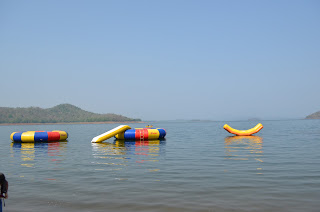By Anita Kalia (anita@origiin.com)
Copyright is a right given by the law to creators of works such as literary, dramatic, musical, and artistic as well as producers of cinematographic films. It is important to know that copyright gives protection for the expression of an idea and not for the idea itself. India is a member of the Berne Convention, an international treaty on copyright, under which, registration of copyright is not an essential requirement for protecting the right. It would, therefore, mean that the copyright on a work created in India would be automatic [inherent] and would simultaneously be protected through copyright in all the member countries of the Berne Convention. The moment, an original work is created, the creator starts enjoying the copyright. However, an undisputable record of the date on which a work was created must be kept.
Appropriate notice of copyright in a proper format is important to be included in the work even though there is no statutory requirement to put it. Having copyright notice serves as an identifier placed on copies of the work to inform the world or the third party (ies) of the copyright ownership. While use of a copyright notice was once required as a condition of copyright protection, it is now optional, though it is highly recommended to include it for various reasons. Use of the copyright notice is the sole responsibility of the copyright owner and does not require formal or advance permission from the Copyright Registry. It is interesting to note that copyright notice can be legitimately included in the work such as website, software CD, books etc even without formal registration of the work with Copyright Registry.
The copyright notice should be clear enough to an ordinary user of the work under normal conditions of use and should not be concealed from view upon reasonable examination. Advantages of putting copyright notice are that it:
ü informs the public that the work is protected by copyright;
ü indicates name of the copyright owner;
ü shows the year of first publication of the work; and
ü has added advantages in case of copyright infringement.
In the event that a work is infringed by third party, if a proper notice of copyright appears on the published copy or copies to which a defendant in a copyright infringement suit had access, then no weight shall be given to such a defendant's defense based on innocent infringement for the reason that innocent infringement occurs only when the infringer did not realize that the work was protected. With a proper copyright notice, infringer cannot take defense of innocent infringement.
Commonly used format to put copyright notice comprises of following elements:
ü The copyright symbol © (the letter C in a circle), or the word "Copyright" can be used;
ü The year of first publication of the work shall be added; and
ü Further to this, the line such as “All rights reserved” can also be used.
Some of the examples of copyright notice are as below:
Copyright © 2012 Origiin IP Solutions LLP, All right reserved
In case of DVD or CD, usually you may see following format:
Copyright © 2012 XYD entertainment. All right of the produced and owner of the CD content reserved. Unauthorized copying, public performance and broadcasting of this content/recording is prohibited and punishable under Copyright Act, 1957.
Copyright notice on the work is a express notice that work is protected by copyright law. Therefore, even if there is no statutory requirement to have copyright notice on the work, it is wise to include it on the work for various reasons.
 Michael
Faraday, a renowned English scientist, had contributed immensely in the area of
electromagnetism and electrochemistry. The Chemical History of a Candle, was
the title of a series of six lectures on the chemistry and of flames given by
Michael Faraday at the Royal Institution in London in 1826. This was the origin
of the Christmas lectures for young people that are still given there every
year and bear his name. The lecture beautifully described the different zones
of combustion in the candle flame, and the presence of carbon particles in the
luminescent zone. The lectures were first printed as a book in 1861. These
lectures were very popular and Faraday used to derive immense pleasure in
communicating the excitement of science to the general public, especially
children.
Michael
Faraday, a renowned English scientist, had contributed immensely in the area of
electromagnetism and electrochemistry. The Chemical History of a Candle, was
the title of a series of six lectures on the chemistry and of flames given by
Michael Faraday at the Royal Institution in London in 1826. This was the origin
of the Christmas lectures for young people that are still given there every
year and bear his name. The lecture beautifully described the different zones
of combustion in the candle flame, and the presence of carbon particles in the
luminescent zone. The lectures were first printed as a book in 1861. These
lectures were very popular and Faraday used to derive immense pleasure in
communicating the excitement of science to the general public, especially
children. 


